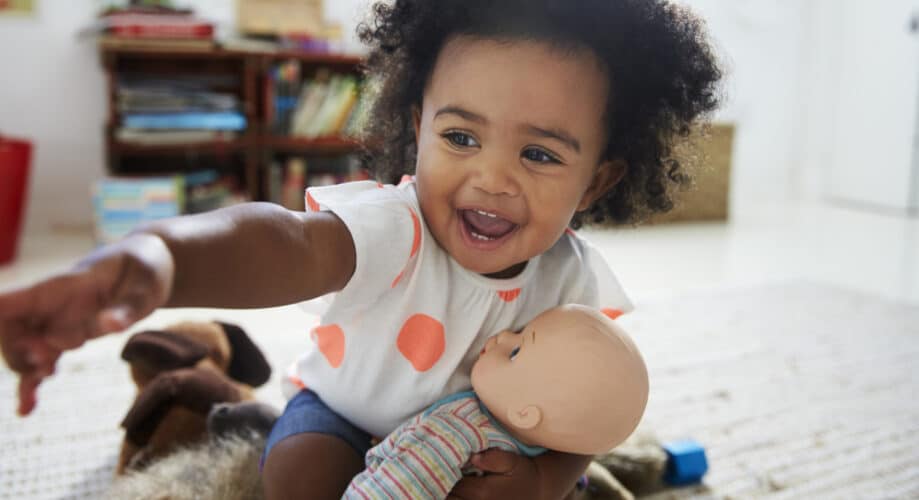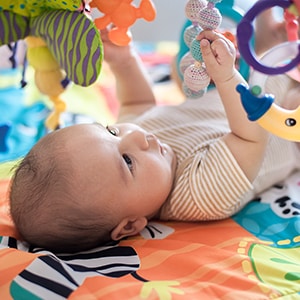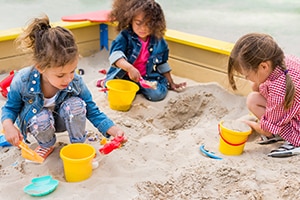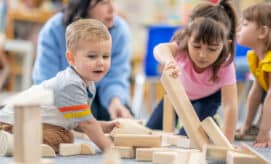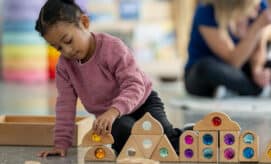In parallel play, little ones sit side-by-side and engage with similar materials, without directly interacting. This might look like two children playing with different items in the same sensory bin or a group of preschoolers working on individual art projects while sitting next to each other. This kind of play typically begins in toddlerhood, around 2 years old, and is often considered to be a bridge to more advanced types of social play. At this stage, children are learning and building the following skills:
- Turn-taking and sharing
- Cooperation
- Communication
- Social awareness
When children are engaging in parallel play, we can support their interests and interactions with other children by…
- pointing out shared interest in an activity, by saying something like, “I am noticing that all three of you are filling your buckets with sand. That looks like a lot of fun. Maybe you’d like to work together?”
- talking with children and offering praise for the way they are working cooperatively with their peers by sharing and taking turns.
- providing multiple quantities of toys and open-ended play items like buckets, shovels, large building blocks, and other open-ended play items, so that there are enough items for children to use at the same time.
5. Associative Play (3 Years – 4 Years Old)
During associative play, children engage in activities that involve more social interaction, shifting their focus away from the objects they are exploring and toward the children they are playing with. Children enjoying associative play might share materials and occupy the same space as they build with legos or create art, but they do not coordinate their actions to reach a specific shared goal. At this stage, children are learning and building the following skills:
- Communication
- Creativity
- Problem-solving
- Emotional regulation
When children are engaging in associative play, we can provide support by…
- standing close by and helping children manage conflicts as they arise, by gently stepping in to provide support to solve the problem together.
- setting up invitations to play around your classroom, with unique materials and items paired together to encourage children to interact and explore.
- ensuring that your classroom has open space so that children can move freely and sit together as a group.
6. Cooperative Play (4 Years and Older)
In this stage of play, children’s more developed social skills enable them to interact with their peers in more complex ways. Children play in organized groups that work towards a shared goal or end product. This might look like dramatic play, in which each child has a role and responsibilities that require coordination, communication, collaboration, and problem-solving. At this stage, children are learning and building the following skills:
- Collaboration
- Problem-solving
- Teamwork
- Conflict resolution
- Leadership
- Empathy
- Communication and negotiation
We can support more complex cooperative play by…
- providing dramatic play spaces in our classrooms that encourage children to work together in an organized and more structured way.
- inviting children to work together on large-scale collaborative art projects to encourage communication, creativity, and collaboration.
- offering activities, such as puzzles, that children can enjoy together through teamwork towards a common goal.
A Note About Development
As we incorporate ideas from the stages of play into our work with young children, it is important to note that these stages are not always linear. Children may move back and forth between them, depending on their development, comfort, the classroom environment, and their unique personalities. Some children may spend longer in one stage than another, and some might bring aspects of previous stages with them to new stages. Each child’s journey through play is unique, and all forms of play are valuable for learning and growth.

